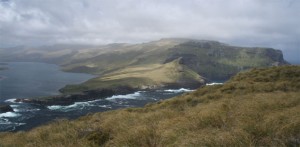
Source: Department of Conservation www.doc.govt.nz
The beauty of the sub-Antarctic Marine Reserves is undeniable. Temperatures may drop as your boat speeds towards them, but once you are there you can witness the spectacular variety of wildlife the islands’ rugged conditions allow for. Fans of penguins can see them mingle in their natural environment, and lovers of spiky fauna can take in a wide array of plants. There are five sub-Antarctic Marine Reserves available for you to enjoy; choosing between them is quite a challenge.
The Snares: The Sub-Antarctic Marine Reserves Most Rugged Islands
The Snares is one of the few Marine Reserves islands to lack pests entirely. Unlike the nearby Antipodes, there are no mice. It is made of one large island, another smaller island that lies to the north east, and a bunch of rocky islets.
Although there are rumours that four convicts once lived on the islands alone, there is no evidence that humans have inhabited The Snares. Naturally, this means they remain untouched by the hands of man. Most tourist boards recommend that visitors do not venture onto The Snares alone. However, it is possible to sail or cruise there and witness the wildlife from your boat. Thanks to their volcanic origins, birds like crested penguins are pushed to the island’s edge, making them easy to spot from your boat.
Bounty Islands
Bounty Islandis also known as ‘MoutereHauriri Marine Reserve’. When you first approach it in your boat only towering, black, bleak rocks are visible. This doesn’t make for a stunning view at first, but as you edge closer the picture improves.
While visitors to sub-Antarctic Marine Reserves may set sail for this island group to see birds, Bounty Islands are your best source of underwater life. If you love seals, this is the best place to see plenty of them. The array of seagulls there is so vast; you can often hear them before you see them. Unfortunately, there is no safe landing destination on these islands. However, you can circle them and observe the nature from a safe distance.
Antipodes Islands
With both shallow in-shores reaching 100m deep and deep ocean environments extending to 3000m deep, the Auckland Islands are some of the most well protected sub-Antarctic Islands. If you want to see charismatic and rare marine wildlife, this is the place to do it. They are a natural habitat for the Southern right whales, and home to multiple forms of albatross and penguins.
In order to visit the islands, you will need a Department of Conservation permit. They are completely protected from harvesting, which means trips to them have to take an Eco tourist approach.
Campbell Islands
There is no place in the sub-Antarctic where you can see so many albatross. Out of the 22 existing species, there are six of them at the Campbell islands. This includes the world’s largest Royal albatross collection, which is great news for fans of majestic birds.
Like many of the sub-Antarctic Marine Reserves, you need a permit before visiting the Campbell Islands. Adhering to the minimum impact code is a great way to go about securing your trip. Leaving without permission or causing damage to the eco-systems there can lead to fines.
Visiting the sub-Antarctic Marine Reserves often requires careful planning. However, with a forward thinking approach, you can make your dream trip a reality.
